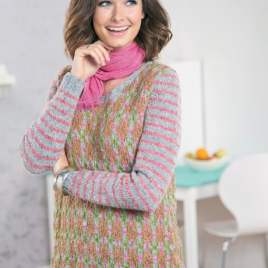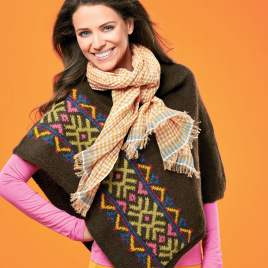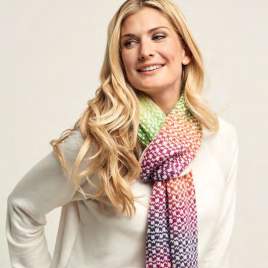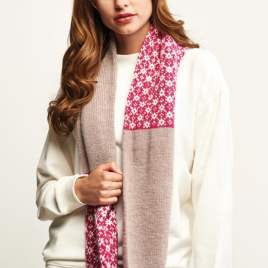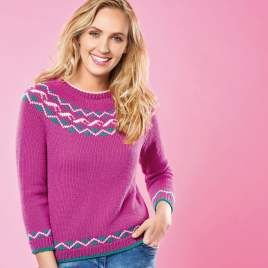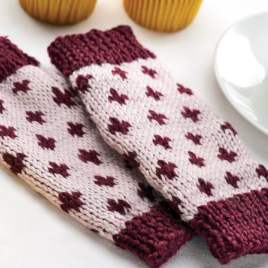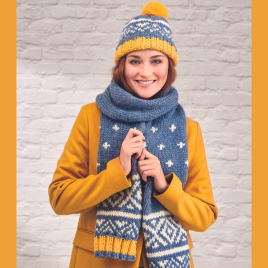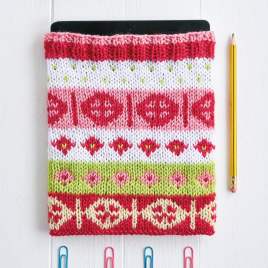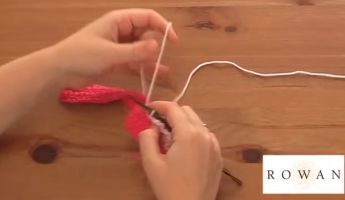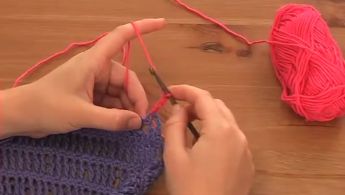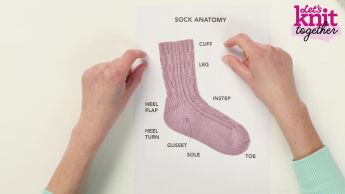How to: work Fair Isle with one hand, two strands
video by
Let's Knit Together
- Overview
- Practical Guides
Fair isle is a way of working stranded colourwork where two yarns are carried along a row. There are three main ways to hold the yarn, and here we look at how to knit and purl with one hand holding both strands. If you’ve not tried Fair Isle knitting before, do watch our introduction to Fair Isle video for an overview.
Join in your yarn at the beginning of the row with a slip knot around the yarn, then you can weave it in at the beginning when you’re ready. To knit with one hand and strands held in the English way, you’ll need to hold both yarns tensioned in the right hand. It’s best to pick up both yarns as one, in your standard way of holding the yarn, then move the contrast colour over your middle finger while keeping the main colour over your index finger. This puts the main (background) colour in the upper position and the contrast yarn in the lower position. It’s important to keep the strands in this same relative positions on knit and purl rows. Keep an even tension by holding both yarns as you would one strand, but don't be surprised if you need to frequently adjust your grip to start with.
On a knit row, work up to the colour change in the main (background) colour, drop the main colour and move your index finger to use the lower contrast yarn from under the main colour. Stretch the stitches as you work as the floating strands on the back of the work can cause the main fabric to pucker. When you change back to the main colour that is the upper strand, drop the lower strand and move your index finger so the main yarn comes across the top of second colour and along the top of the needle. Stretch the stitches again and continue to work along the row, changing colours while maintaining the relative positions.
If you’re going to knit stranded colourwork in this way, you may want to learn to throw the yarn with your middle finger, rather than having to change to use your index finger, as this will speed up your knitting. At a row end, twist yarns together to ensure they are carried along the entire row. To reduce tangles, always turn needle end away from you, alternating direction each time. For purl row, it is a similar principle, just with holding both yarns in front. Ensure the upper strand lays over your index finger, with the yarn across top, and picking up the lower strand from underneath. To change back from the upper strand, make sure it comes across and above the lower strand. As before, stretch the stitches to ensure the floats are not too tight and twist the yarns together at the end of a row.







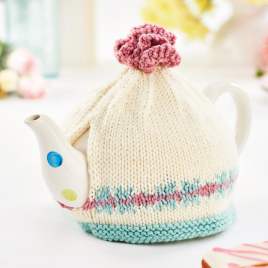



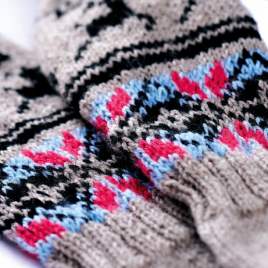



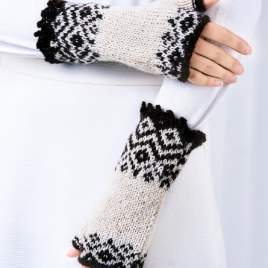

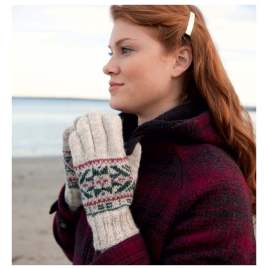

_268_268_64_c1.jpg)
